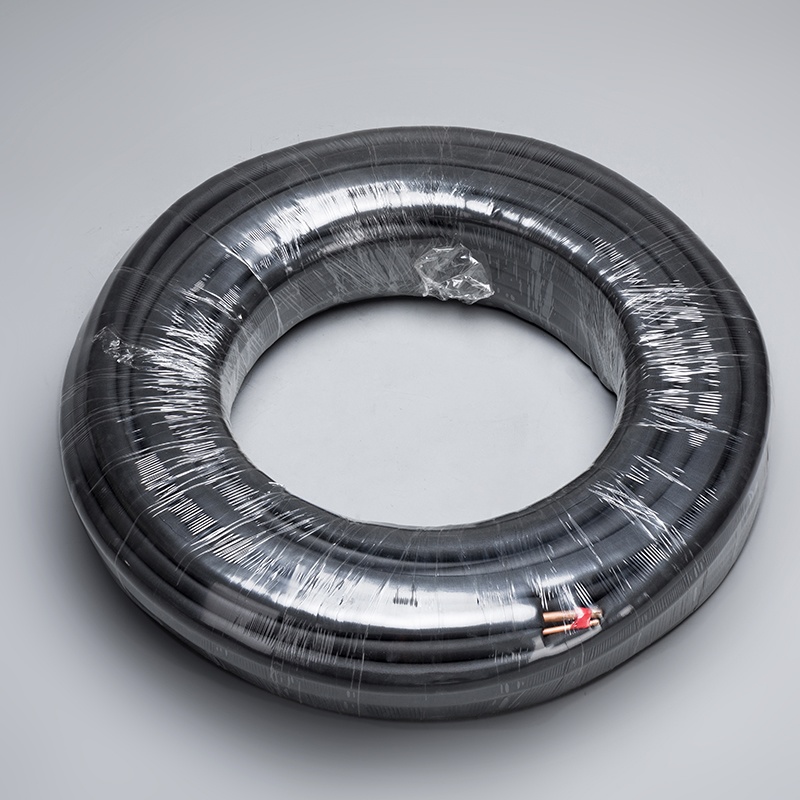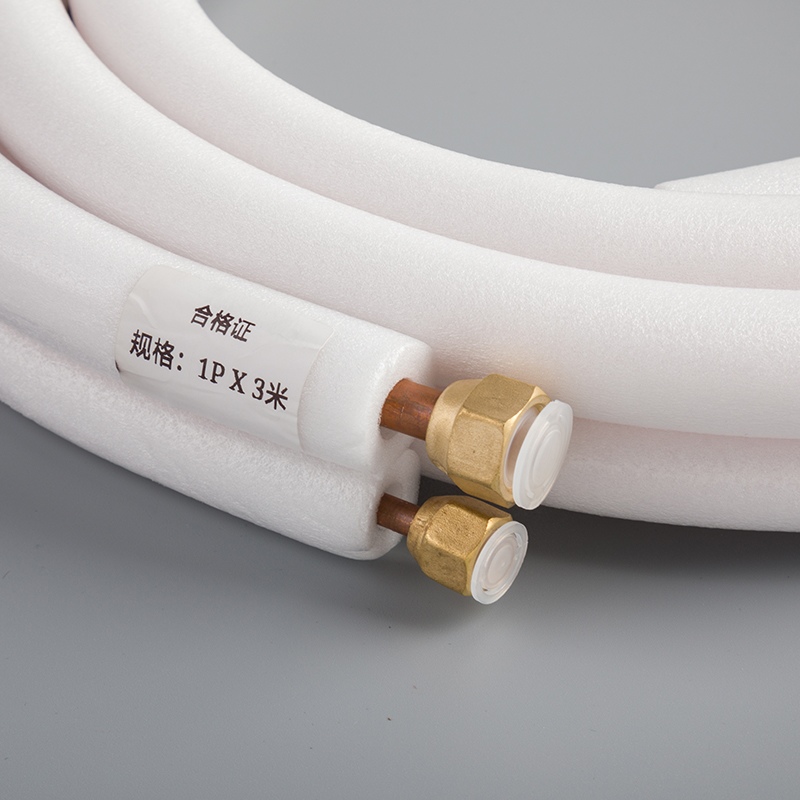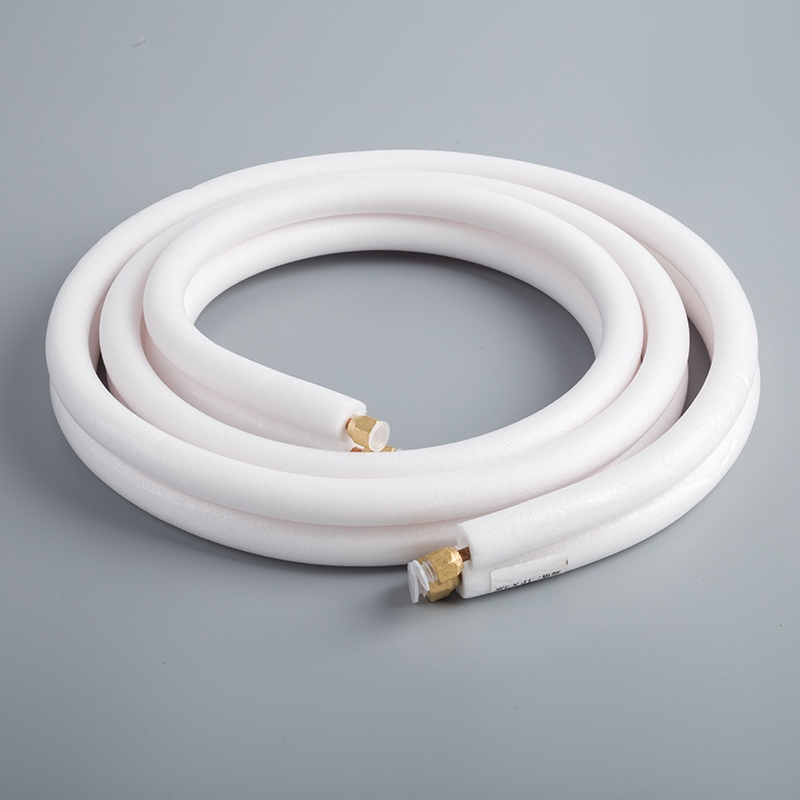Your Essential Guide: How to Measure Copper Pipe Size

Accurate measurements play a pivotal role in the realm of plumbing, ensuring precision and quality in every project. Understanding how to measure copper pipe size is a fundamental skill that every aspiring plumber must master. By grasping the nuances of this process, individuals can guarantee seamless fittings and secure connections within their pipelines. Whether you're working with 1 in copper or any other size, the significance of proper measurement extends beyond mere numbers; it reflects a commitment to excellence and safety in plumbing endeavors. Additionally, knowing how to solder copper pipes and repair copper pipe effectively are essential skills that complement accurate measurements. Embracing the art of precise measurements is not just a task but a gateway to successful plumbing ventures.
Measuring Copper Pipe Size

To accurately measure copper pipe size, one must utilize the essential tools required for the task. A Measuring Tape is indispensable for determining the precise length of the pipe. Additionally, a Pipe Cutter ensures clean and accurate cuts, vital for seamless connections. Finally, a Deburring Tool plays a crucial role in removing any imperfections from the pipe's edges, guaranteeing a smooth finish.
The process of measuring copper pipe size involves several critical steps that must be followed diligently. Initially, Marking the Pipe accurately with a pencil is crucial to ensure precise cutting. Subsequently, Cutting the Pipe to the required length demands precision and attention to detail. Finally, Measuring the Diameter of the pipe's end accurately is essential for selecting appropriate fittings.
Common mistakes can often hinder accurate measurements when working with copper pipes. Incorrectly marking the pipe can lead to errors in cutting and fitting. Inaccurate cutting may result in ill-fitting connections and leaks down the line. Ignoring burrs on the pipe's edges can compromise the integrity of joints and fittings, leading to potential issues in plumbing systems.
Remember that each step in measuring copper pipe size contributes to the overall success of your plumbing project. By using the right tools correctly and following each step meticulously, you ensure that your fittings are secure and leak-free.
Preparing the Pipe
To ensure the seamless integration of copper pipes into your plumbing system, Cleaning the Pipe is a crucial initial step. Begin by meticulously Removing Debris from the surface of the pipe to guarantee smooth connections. Following this, focus on Ensuring a Smooth Surface free from any obstructions or imperfections that could hinder proper fittings.
When preparing copper pipes for installation, it is essential to address any burrs present on the pipe's edges. Deburring the Pipe involves eliminating both Inside Burrs and Outside Burrs to promote secure and leak-free connections. By smoothing out these imperfections, you pave the way for successful plumbing projects with minimal complications.
One of the essential skills in plumbing is knowing How to Solder Copper Pipes effectively. Before beginning the soldering process, gather all the necessary tools for this task. Once equipped, follow precise Steps for Soldering, ensuring that each connection is secure and durable for long-term use.
Ensuring Accurate Measurements

When it comes to plumbing projects, ensuring accurate measurements is paramount for success. Double-checking measurements can prevent costly mistakes down the line. Re-measuring the copper pipe size before making any cuts is a simple yet effective way to guarantee precision. By verifying the measurements with fittings, one can confirm that everything aligns perfectly, minimizing errors during installation.
In the event of a leak in your plumbing system, knowing how to repair copper pipe is a valuable skill. Identifying leaks promptly allows you to address them before they escalate into more significant issues. Fixing leaks efficiently not only prevents water damage but also maintains the integrity of your entire plumbing setup.
When working with 1 in copper, understanding its specifics and common uses is essential for seamless installations. The specific characteristics of 1 in copper make it ideal for various applications, from residential to commercial settings. Knowing where and how to utilize this type of copper pipe ensures optimal performance and longevity in your plumbing projects.
Remember, accuracy in measurements is the cornerstone of successful plumbing endeavors. By double-checking measurements, repairing copper pipes effectively, and understanding the nuances of different copper sizes like 1 in copper, you set yourself up for efficient and reliable plumbing systems.
Achieving precision in pipe fitting requires technical expertise, reliable tools, adherence to standards, thorough planning, verification, continuous learning, and mentorship.
Different methods can provide precise data about any given pipe dimension.
Importance of accuracy in pipe measurement for safety and environmental protection.
Precision and accuracy are crucial in pipe fitting for safety, efficiency, and sustainability.
See Also
Top 5 Tips for Handling Unusual 1/2' Copper Pipes
The Definitive Manual for Purchasing Copper Pipe Coils
Key Advice for Utilizing 1/4 Copper Pipe Fittings
The Complete Handbook for Purchasing 1/4 3/8 Copper Pipe Coils
The Comprehensive Manual for Choosing 1/4 3/8 Copper Pipe Coils


